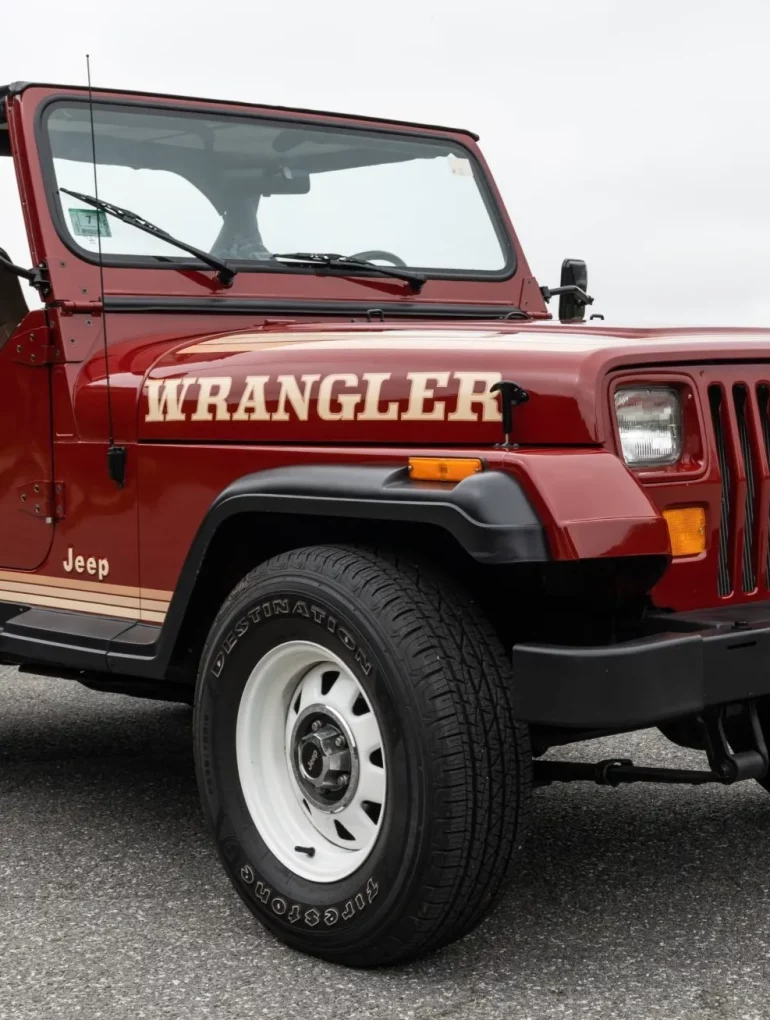The 1987 Jeep Wrangler: A New Chapter in Off-Road Excellence
The year 1987 marked a significant milestone in the history of off-road vehicles with the introduction of the Jeep Wrangler. Building on a legacy that began with the military Jeep of World War II and carried through with the civilian Jeep CJ series, the 1987 Wrangler (YJ) brought modern enhancements and a new design philosophy while staying true to the rugged, adventurous spirit that defined its predecessors.
A Design Revolution
The 1987 Jeep Wrangler introduced a number of changes that distinguished it from the CJ series. Most notably, it featured rectangular headlights—a departure from the traditional round headlights that had been a staple of Jeep design. This change sparked considerable debate among enthusiasts but also signaled a new era for the brand. The YJ maintained the classic Jeep grille with its iconic seven slots, ensuring that it remained instantly recognizable.
Underneath its distinctive exterior, the Wrangler YJ offered improved safety and comfort features. The frame was wider and more robust, providing better stability and handling. The interior saw significant upgrades as well, with more comfortable seating and a redesigned dashboard that offered greater functionality. These changes made the Wrangler more appealing to a broader audience, including those who wanted a vehicle that could serve as both a daily driver and an off-road adventurer.
Performance and Capability
At the heart of the 1987 Jeep Wrangler was a commitment to off-road excellence. It came standard with a 2.5-liter AMC inline-four engine, producing 117 horsepower and 135 lb-ft of torque. For those seeking more power, an optional 4.2-liter AMC inline-six engine was available, offering 112 horsepower and a robust 210 lb-ft of torque. Both engines were paired with a choice of a five-speed manual or a three-speed automatic transmission, providing drivers with the flexibility to choose their preferred driving experience.
The Wrangler YJ’s suspension system was designed to enhance its off-road capabilities while improving on-road comfort. It featured leaf springs with track bars and sway bars, which helped to reduce body roll and improve handling. The YJ’s ground clearance, combined with its solid front and rear axles, ensured that it could tackle a variety of terrains, from rocky trails to muddy paths.
Legacy and Impact
The introduction of the 1987 Jeep Wrangler marked a pivotal moment in the evolution of the Jeep brand. It successfully bridged the gap between the rugged simplicity of the CJ series and the more refined, versatile vehicles that would follow. The YJ’s design and engineering innovations set the stage for future generations of Wranglers, each building on the foundation laid by the 1987 model.
Despite initial skepticism about its new design elements, the Wrangler YJ quickly gained a loyal following. Its combination of classic Jeep ruggedness with modern amenities made it a hit among off-road enthusiasts and urban drivers alike. The YJ’s legacy is evident in the continued popularity of the Wrangler, which remains a best-seller and a symbol of adventure and freedom.
Conclusion
The 1987 Jeep Wrangler was more than just a new model; it was a reimagining of what a Jeep could be. By blending traditional off-road capability with contemporary design and comfort, the YJ set a new standard for the Jeep brand. Today, it is remembered not only for its unique place in Jeep history but also for its role in shaping the future of off-road vehicles. The 1987 Wrangler stands as a testament to the enduring appeal of the Jeep name and the adventurous spirit it embodies.

